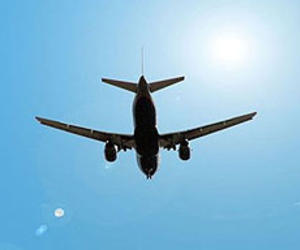Key West to Cuba Flights Struggle to Take Off
- Submitted by: lena campos
- Travel and Tourism
- 11 / 28 / 2013

One of the first sights greeting passengers at the Key West International Airport is a statue of two families with children standing around a large, concrete buoy. "Ninety miles to Cuba," reads the words etched on the centerpiece.
From that runway, tourists are closer to Havana than they are to Miami. And decades ago, residents of this southernmost outpost in Florida could fly to Cuba for lunch and be back in time for dinner.
It's only a short flight across the Florida Straits, once crisscrossed regularly. But that hasn't happened since 1960 and it's uncertain whether it will happen any time soon.
Two years ago, U.S. Customs and Border Projection gave Key West the green light to resume flights to and from Cuba that had long been stifled by a ban on most American travel to the island after the Cuban Revolution. Yet not a single plane has taken off for the island since.
"Several organizations have approached us, including airlines, and said, 'If you get status as a port of entry for Cuba, we sure are interested in flying to Cuba,'" Key West International Airport director Peter Horton said. "And so far all of those — and there are at least four that I can remember offhand — have not been successful."
Charter flight companies and booking agencies say they've struggled to get all the required approvals from U.S. and Cuban authorities. One of the charter companies that initially was taking part in the airport's application has gone out of business. Another stopped service to Florida altogether.
Then there's the issue of airport capacity: Currently, Key West is only approved by U.S. Customs and Border Protection to process 10 passengers and crew flying in from Cuba at any one time. The airport is working on an expansion that would eventually allow it to process about 70.
"If you would have a 30-seater, or a 25-seater that could do flights, that could be a profitable operation," said John Cabanas, former president of C&T Charters, which initially wanted to do the flights but has since closed.
Key West and Cuba have a long and intertwined history. So when President Barack Obama announced in 2011 that he was directing agencies to allow all U.S. international airports to apply to allow licensed charters to operate Cuba flights, Key West was among the first to apply.
There are now 19 U.S. airports authorized to provide flights to the Caribbean nation, which has had limited diplomatic relations with the U.S. since shortly after the 1959 revolution. Under Obama, travel to Cuba has increased. U.S. citizens can once again apply for so-called people-to-people licenses, which encourage cultural and educational exchanges. Cuban-Americans also have returned to visit the island in rising numbers.
Cuban officials have said they receive as many as 500,000 visitors from the United States annually, most of those Cuban-Americans visiting relatives.
The majority depart from big cities like Miami and New York. But Key West has long held a special place in the story of U.S. and Cuba relations.
Cuban poet and independence leader Jose Marti visited Key West to rally support from the island's large and wealthy Cuban population in 1892. He spoke to workers in the island's many cigar factories and at the San Carlos Institute, a stately building that still proudly hangs a large Cuban flag from its balcony.
Source: ABCNews.go.com
Comments